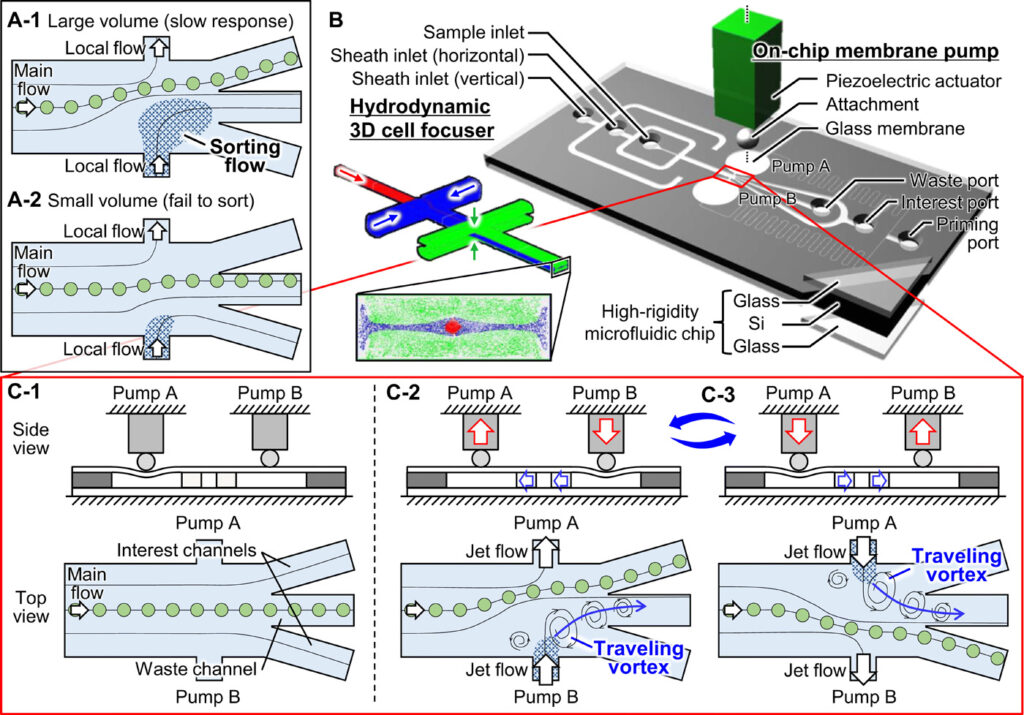
This paper looks at a design that can sort particles larger than 100 microns at a high throughput rate greater than 5 kilohertz. This is then used to date microbeads and purified fossil pollen from two glacial lake sediments. This is then compared to carbon dating where the method was considered accurate. The authors suggest applications in the fields of medicine, genomics and paleoclimatology.
